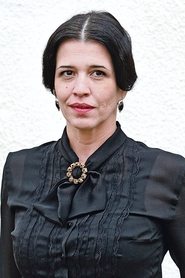
Ask Your Own Question
What is the plot?
In the small, isolated town of Flat Hill, the story begins with the arrival of a new family, the Parkers, who move into an old, dilapidated house on the outskirts. The family consists of parents, Mark and Lisa, and their teenage daughter, Emily. As they unpack, Emily feels a sense of unease about the house, noticing strange noises and shadows that seem to move on their own. Mark is optimistic about the move, hoping to start fresh after a difficult year, while Lisa is more apprehensive, sensing that something is off about the town.
The next day, Emily explores the town and meets a group of local teenagers, including the charismatic but mysterious Jake. They invite her to a party that evening, and despite her initial hesitation, she decides to go, eager to fit in. At the party, Emily feels out of place but is drawn to Jake, who seems to take a special interest in her. As the night progresses, she overhears whispers about the town's dark history, particularly concerning the old house they moved into, which is rumored to be haunted.
Meanwhile, Mark and Lisa begin to experience strange occurrences in their home. Doors slam shut on their own, and they hear whispers at night. Lisa becomes increasingly worried, while Mark dismisses her concerns, attributing the events to the house settling. Tension builds between them as Lisa insists they should leave Flat Hill, but Mark refuses, wanting to prove that they can make a life there.
As Emily spends more time with Jake, she learns about the town's secrets. He reveals that Flat Hill was once the site of a tragic event involving a family that mysteriously disappeared. The townspeople have since covered up the details, but Jake believes that the spirits of the lost family still linger, seeking closure. Emily becomes fascinated by the story and starts to investigate further, feeling a connection to the past.
One night, Emily and Jake decide to explore the abandoned house where the tragic event occurred. They break in and find remnants of the family's life, including old photographs and personal belongings. As they delve deeper, they inadvertently awaken a malevolent spirit that begins to haunt them. They narrowly escape the house, but not without feeling the spirit's wrath, which leaves them shaken and terrified.
Back at home, the Parker family faces escalating supernatural events. Mark finally witnesses a door slam shut in front of him, and he begins to question his skepticism. Lisa, feeling increasingly isolated, reaches out to the local librarian, Mrs. Thompson, who reveals more about the town's history and the family that disappeared. She warns Lisa that the spirits are restless and that they must confront the past to find peace.
Emily, now fully invested in uncovering the truth, convinces Jake to help her perform a séance to communicate with the spirits. They gather a few friends, including Emily's new acquaintances, and set up in the Parker's living room. During the séance, the atmosphere becomes charged, and they receive messages from the spirits, revealing their tragic fate and their desire for justice. The group is terrified but determined to help the spirits find peace.
As the investigation continues, tensions rise within the Parker family. Mark becomes increasingly obsessed with the house, believing that if they can solve the mystery, they can rid themselves of the haunting. Lisa, on the other hand, wants to leave Flat Hill for good. Their arguments escalate, and Emily feels caught in the middle, torn between her parents and her desire to uncover the truth.
In a climactic confrontation, the family decides to confront the spirit directly. They gather in the living room, armed with the knowledge they've gained from their research. As they call out to the spirit, the atmosphere grows heavy, and the lights flicker. The spirit manifests, revealing itself as a shadowy figure that embodies the pain and sorrow of the past. The family must work together to confront the spirit, acknowledging its suffering and expressing their desire to help it find peace.
In a moment of vulnerability, Emily steps forward, sharing her own feelings of loss and fear. This act of empathy resonates with the spirit, which begins to calm. The family collectively expresses their understanding and compassion, allowing the spirit to finally release its hold on them. The shadow dissipates, and a sense of tranquility fills the room.
With the spirit at peace, the Parker family finds a renewed sense of unity. They decide to stay in Flat Hill, embracing the town and its history rather than running from it. Emily and Jake's bond deepens, and they become a symbol of hope for the town, showing that understanding and compassion can heal even the deepest wounds. The season ends with the family looking out over Flat Hill, ready to face whatever comes next together.
What is the ending?
In the ending of "Flat Hill," the main characters confront their personal demons and the unresolved tensions that have built throughout the season. The climax occurs during a community gathering where secrets are revealed, leading to a dramatic confrontation. By the end, the characters find a sense of closure, albeit with lingering questions about their futures.
As the final episode unfolds, the scene opens in the town square of Flat Hill, where the community has gathered for the annual festival. Colorful banners flutter in the breeze, and the air is filled with the sounds of laughter and music. However, beneath the festive atmosphere lies an undercurrent of tension, as unresolved conflicts among the main characters simmer just below the surface.
The camera pans to Sarah, who stands at the edge of the crowd, her expression a mix of determination and anxiety. She has been grappling with her feelings for Jake, who has been distant since their fallout earlier in the season. As she watches him interact with others, a sense of longing washes over her. She knows that this festival could be her last chance to confront him and express her feelings.
Meanwhile, Jake is seen laughing with his friends, but his eyes betray a sense of guilt. He has been avoiding Sarah, not just because of their argument, but also due to his own insecurities about their relationship. As the festival progresses, he feels the weight of his decisions pressing down on him.
The scene shifts to Mark, who has been struggling with his role in the community and his relationship with his father. He stands apart from the festivities, feeling isolated and unsure of his place. His internal conflict is palpable as he watches families enjoying the day, a stark reminder of the strained relationship he has with his own father, who has always pushed him to succeed.
As the sun begins to set, casting a warm golden light over the square, Sarah finally gathers the courage to approach Jake. She finds him near the food stalls, and their conversation begins awkwardly. Sarah expresses her feelings, revealing how much she has missed their connection. Jake, taken aback, admits that he has been scared of losing her and that he has been avoiding her out of fear. Their exchange is charged with emotion, and as they talk, the tension between them begins to dissipate.
At the same time, Mark's father arrives at the festival, searching for him. When they finally come face to face, the confrontation is intense. Mark's father expresses disappointment in his son, while Mark, fueled by frustration, finally stands up for himself. He articulates his desire to forge his own path, separate from his father's expectations. This moment of honesty is cathartic for both of them, and they begin to understand each other better.
As the night deepens, the festival culminates in a fireworks display. The vibrant colors light up the sky, mirroring the emotional breakthroughs happening among the characters. Sarah and Jake share a tentative but hopeful kiss, signaling a new beginning for their relationship. Mark, feeling empowered, joins his father in watching the fireworks, a silent acknowledgment of their evolving relationship.
The final scene shows the characters standing together, united by their experiences. They look up at the sky, reflecting on the challenges they have faced and the growth they have achieved. The camera slowly pulls away, capturing the sense of community and hope that has emerged from the conflicts of the season.
In the end, Sarah and Jake are on a path toward reconciliation, with a renewed commitment to each other. Mark has taken a significant step toward independence, and his relationship with his father is on the mend. The festival serves as a backdrop for their personal transformations, highlighting the themes of connection, understanding, and the importance of facing one's fears. The screen fades to black, leaving the audience with a sense of optimism for the future of Flat Hill and its residents.
Is there a post-credit scene?
In the show "Flat Hill," season 1, there is indeed a post-credit scene that adds an intriguing layer to the narrative. As the credits roll, the screen fades back in to reveal a dimly lit room filled with old photographs and newspaper clippings pinned to a corkboard. The camera slowly pans across the board, focusing on a particular photo of the main characters from the season, smiling together during a seemingly carefree moment.
Suddenly, the camera zooms in on a newspaper clipping that reads, "Mysterious Disappearances Continue in Flat Hill." The headline is bold and alarming, hinting at the underlying tension that has been building throughout the season. As the camera lingers on the article, a shadowy figure is seen in the background, watching the board intently. The figure's face is obscured, but their presence is palpable, creating a sense of foreboding.
The scene cuts to black, and a chilling sound of a door creaking open echoes, leaving viewers with a sense of unease and anticipation for what might come next. This post-credit moment serves to deepen the mystery surrounding Flat Hill and hints at unresolved conflicts and potential threats that could emerge in future episodes.
What motivates the main character, Sarah, to return to Flat Hill after so many years?
Sarah's return to Flat Hill is driven by a mix of nostalgia and unresolved issues from her past. She feels a deep connection to her childhood home, but also carries the weight of a family tragedy that she has avoided confronting. Her internal struggle is palpable as she grapples with feelings of guilt and the desire to reconnect with her estranged family.
How does the relationship between Sarah and her brother, Tom, evolve throughout the season?
Initially, Sarah and Tom's relationship is strained, filled with unspoken resentment and misunderstandings stemming from their shared past. As the season progresses, they are forced to confront their childhood memories and the trauma that has kept them apart. Key scenes reveal their vulnerability, leading to moments of reconciliation and deeper understanding, ultimately strengthening their bond.
What role does the mysterious figure, Mr. Jenkins, play in the unfolding events of Flat Hill?
Mr. Jenkins serves as a catalyst for the main characters' revelations. His enigmatic presence in Flat Hill raises questions about the town's history and the secrets it holds. As Sarah interacts with him, she uncovers layers of her family's past, which not only impacts her personal journey but also reveals the interconnectedness of the town's residents.
What is the significance of the old oak tree in the story?
The old oak tree symbolizes both the passage of time and the roots of Sarah's family history. It is a place of solace for Sarah, where she reflects on her childhood and the memories associated with it. Throughout the season, the tree becomes a focal point for key emotional scenes, representing growth, loss, and the possibility of healing.
How does the town of Flat Hill itself influence the characters' decisions and actions?
Flat Hill is portrayed almost as a character in its own right, with its quaint yet haunting atmosphere shaping the experiences of Sarah and the other residents. The town's history, its tight-knit community, and the lingering effects of past events create a backdrop that influences the characters' motivations and decisions, often pushing them to confront their fears and desires.
Is this family friendly?
"Flat Hill," season 1, produced in 2013, contains several themes and scenes that may not be suitable for all children or sensitive viewers. Here are some potentially objectionable or upsetting aspects:
-
Family Conflict: The show explores intense family dynamics, including arguments and emotional confrontations that may be distressing for younger viewers.
-
Loss and Grief: Characters deal with themes of loss, which can evoke strong emotions and may be upsetting for children or those sensitive to such topics.
-
Bullying: There are instances of bullying among peers, which can be uncomfortable to watch and may resonate negatively with viewers who have experienced similar situations.
-
Mental Health Struggles: Some characters exhibit signs of mental health issues, leading to scenes that may be heavy or difficult to process for sensitive audiences.
-
Mild Language: The dialogue includes occasional mild profanity, which may not be appropriate for younger viewers.
-
Emotional Turmoil: Characters often experience deep emotional struggles, including anxiety and depression, which could be triggering for some viewers.
These elements contribute to the overall emotional weight of the series, making it more suitable for older children and adults rather than a family-friendly viewing experience for all ages.






















































